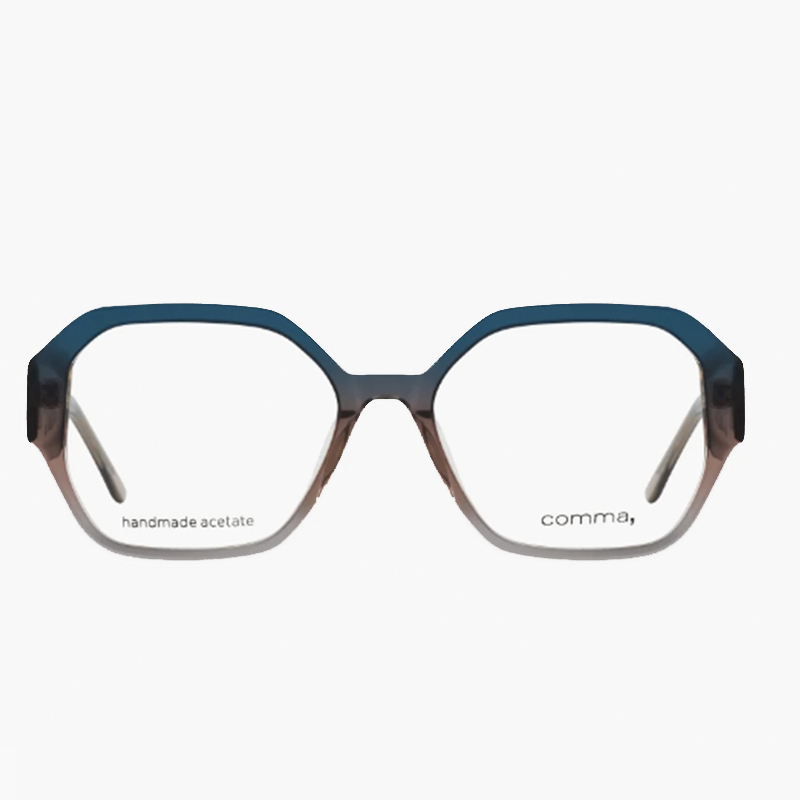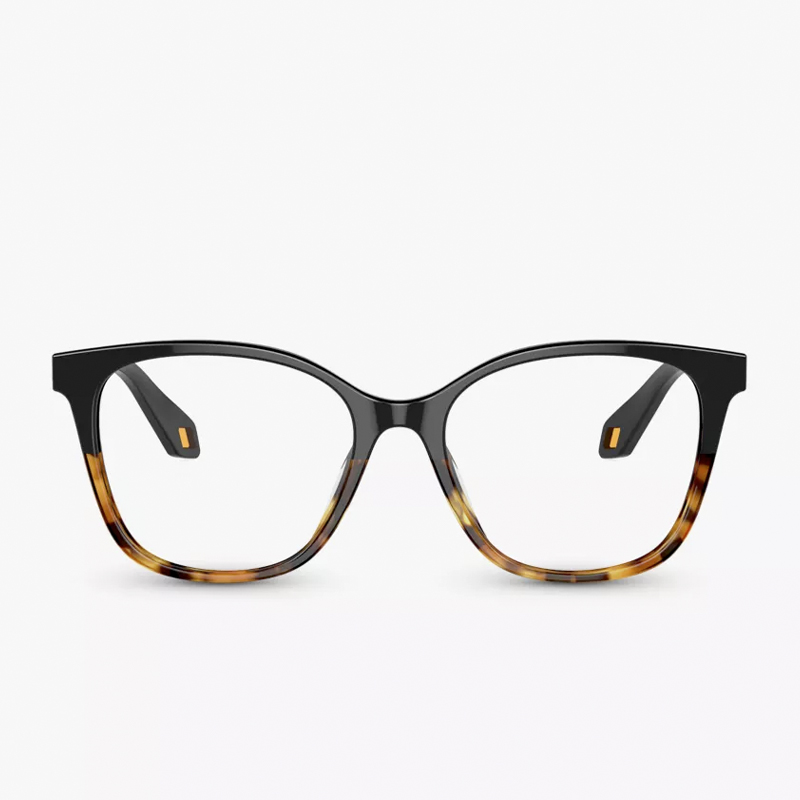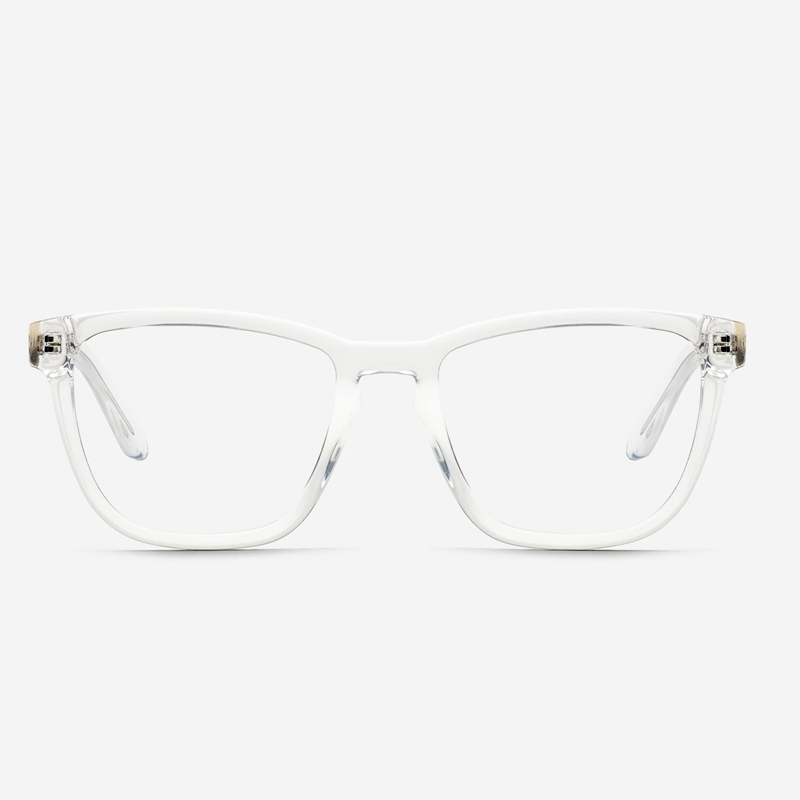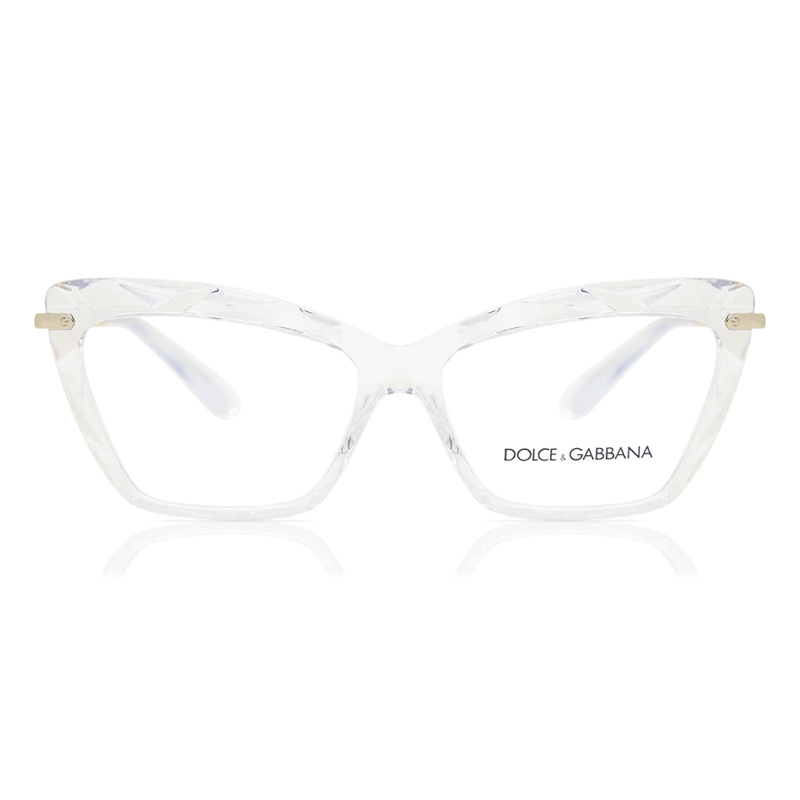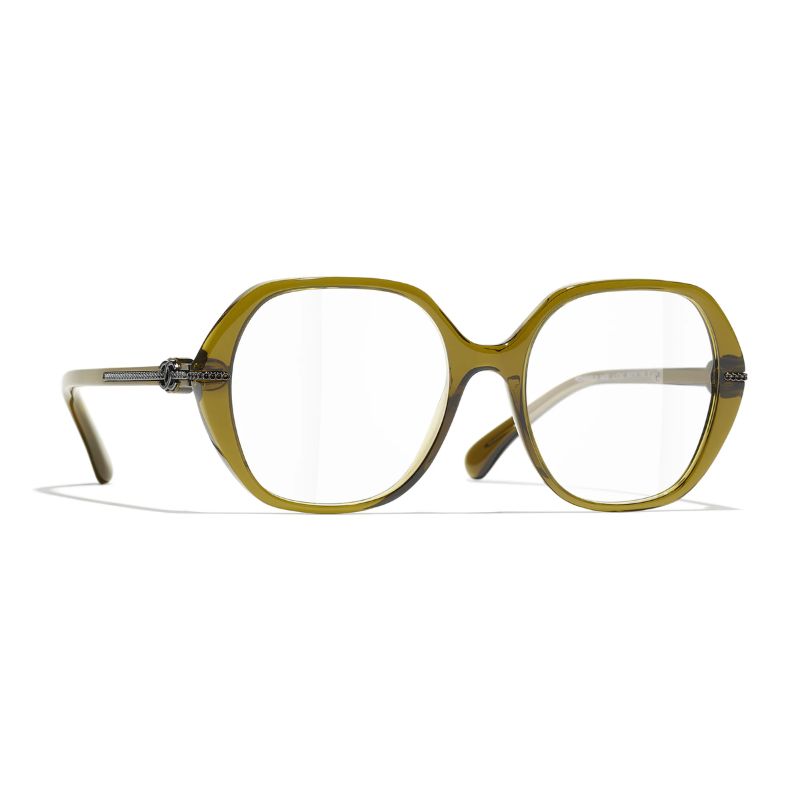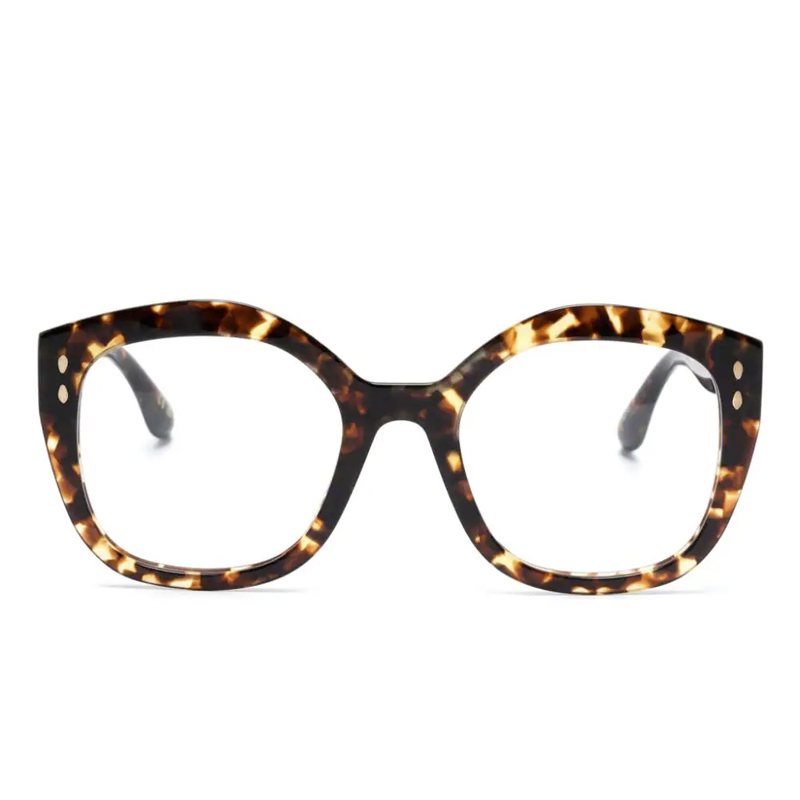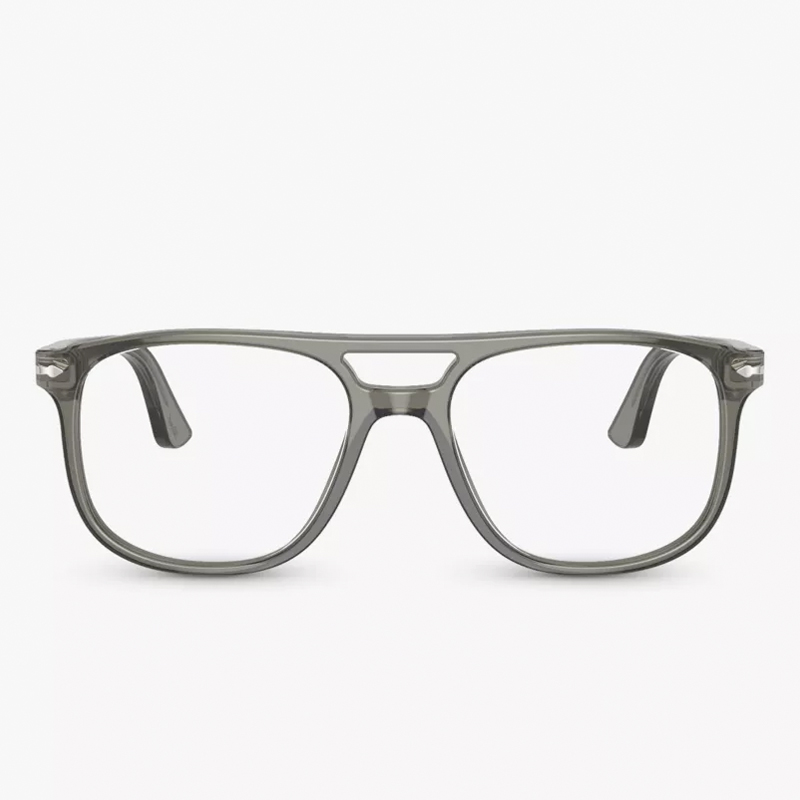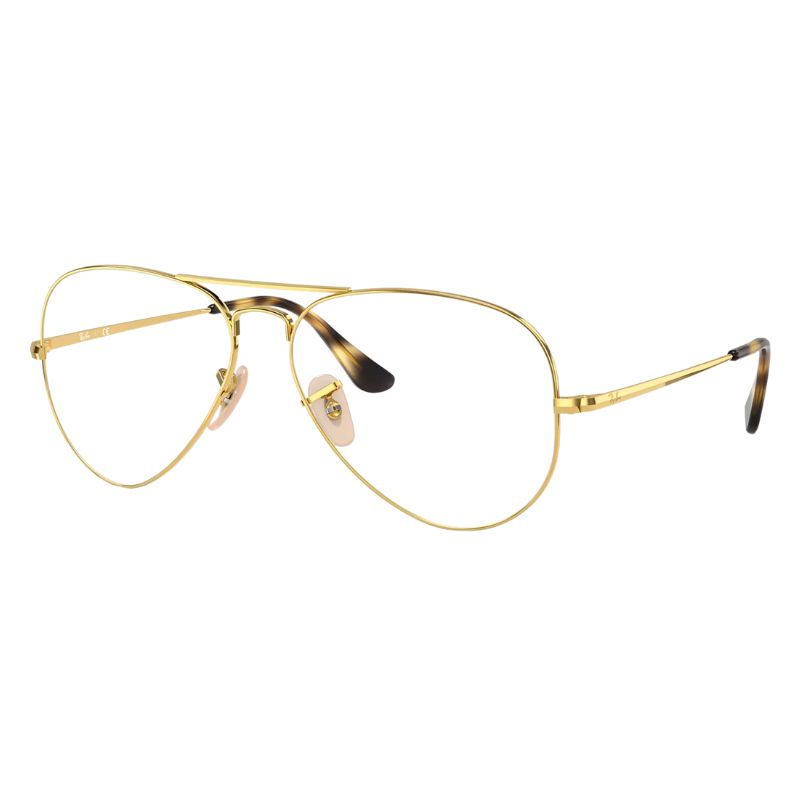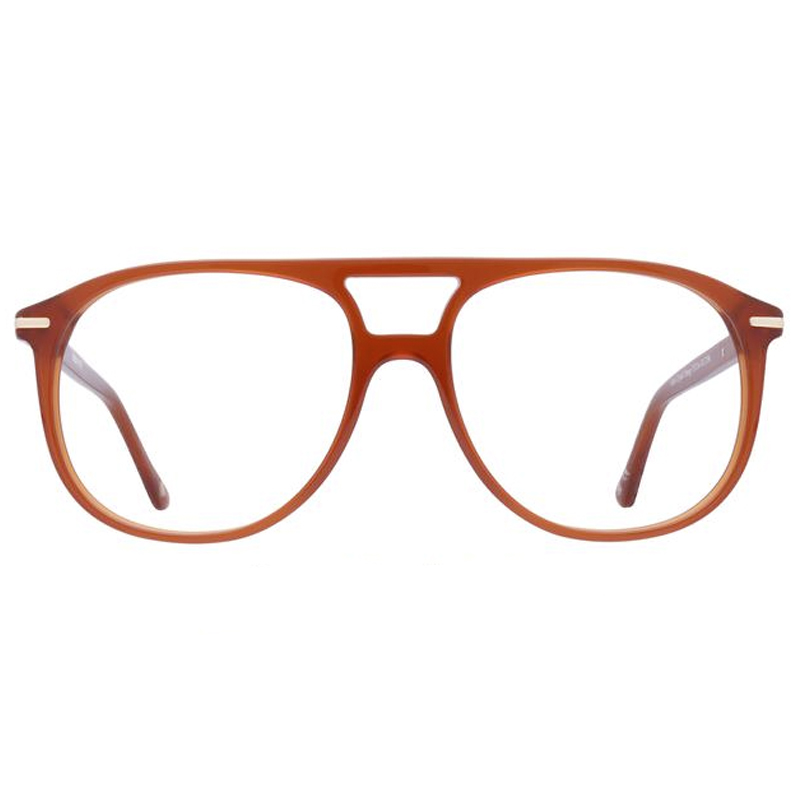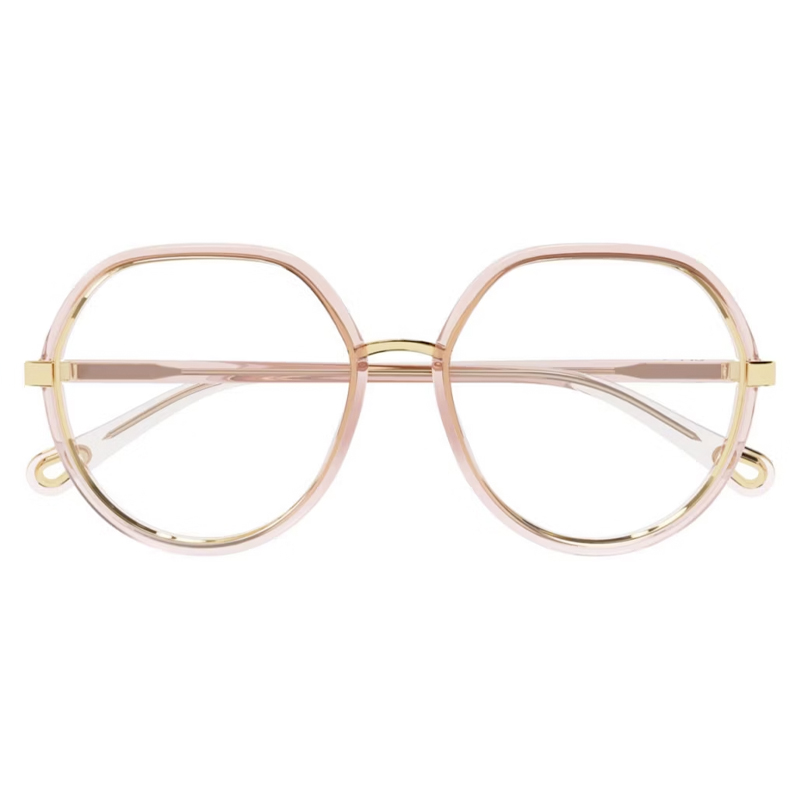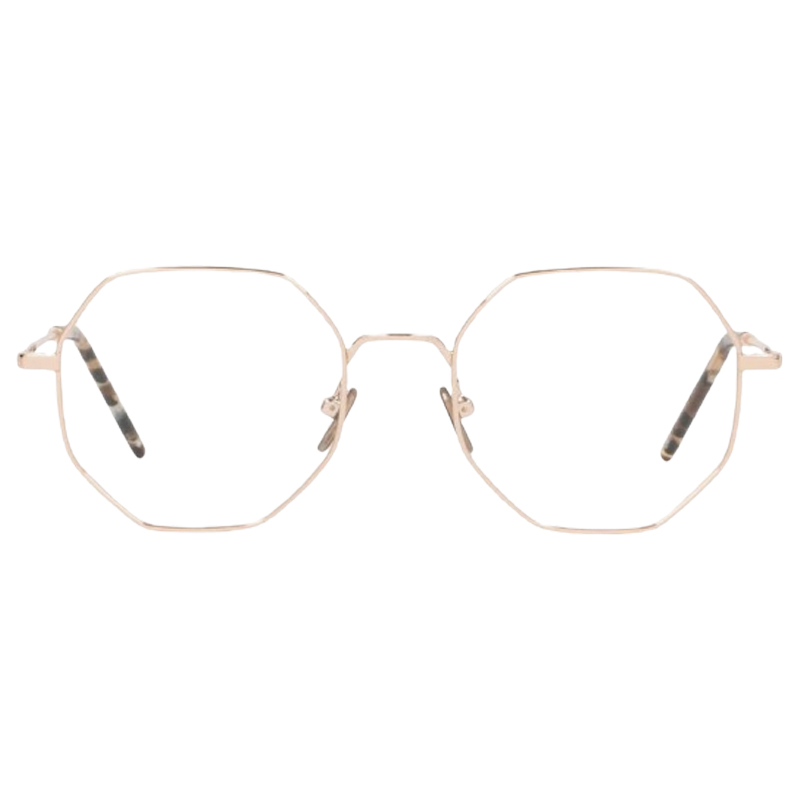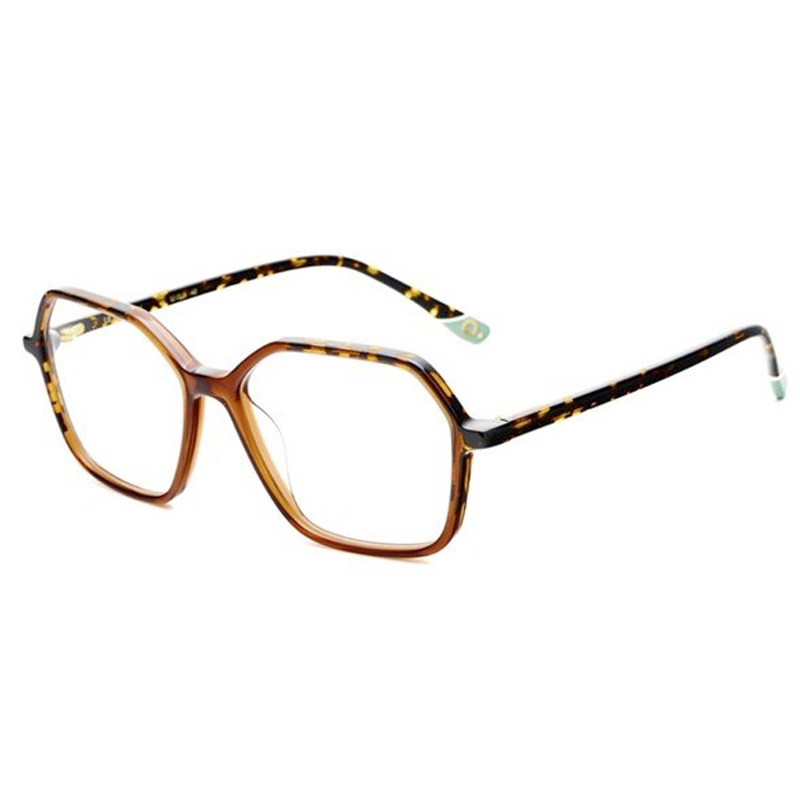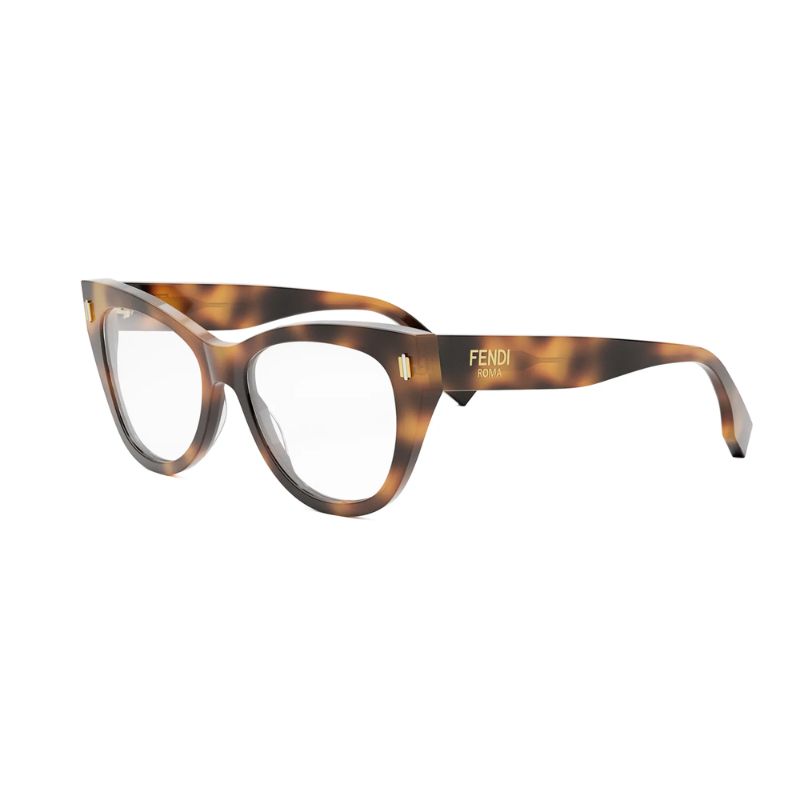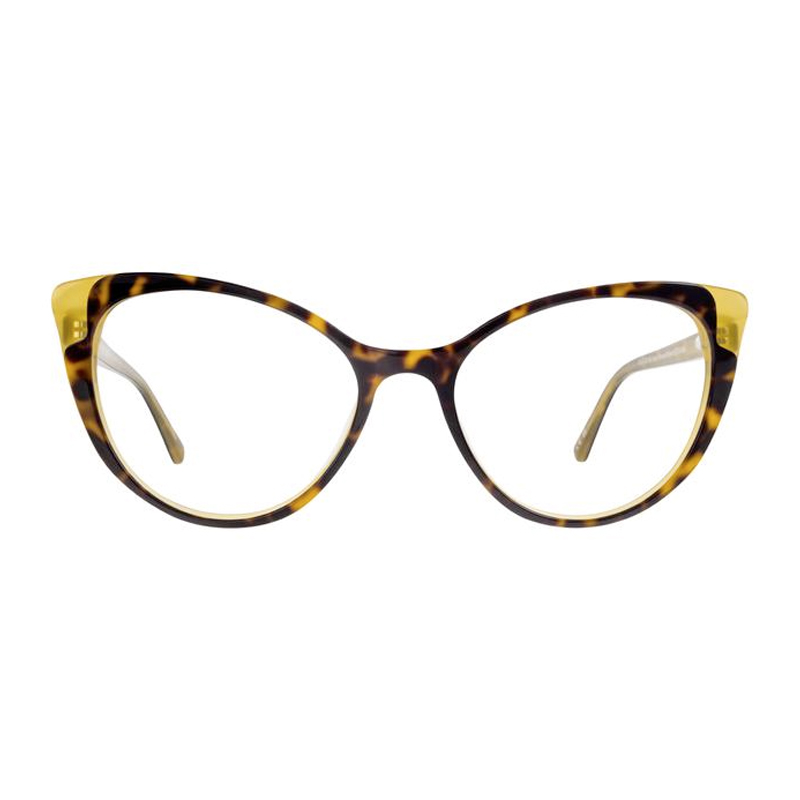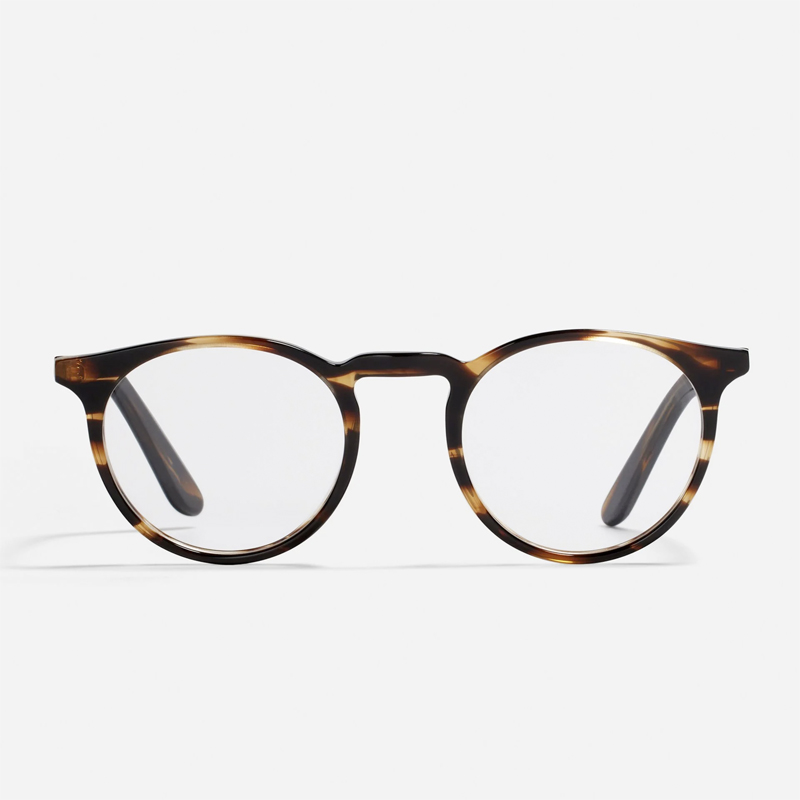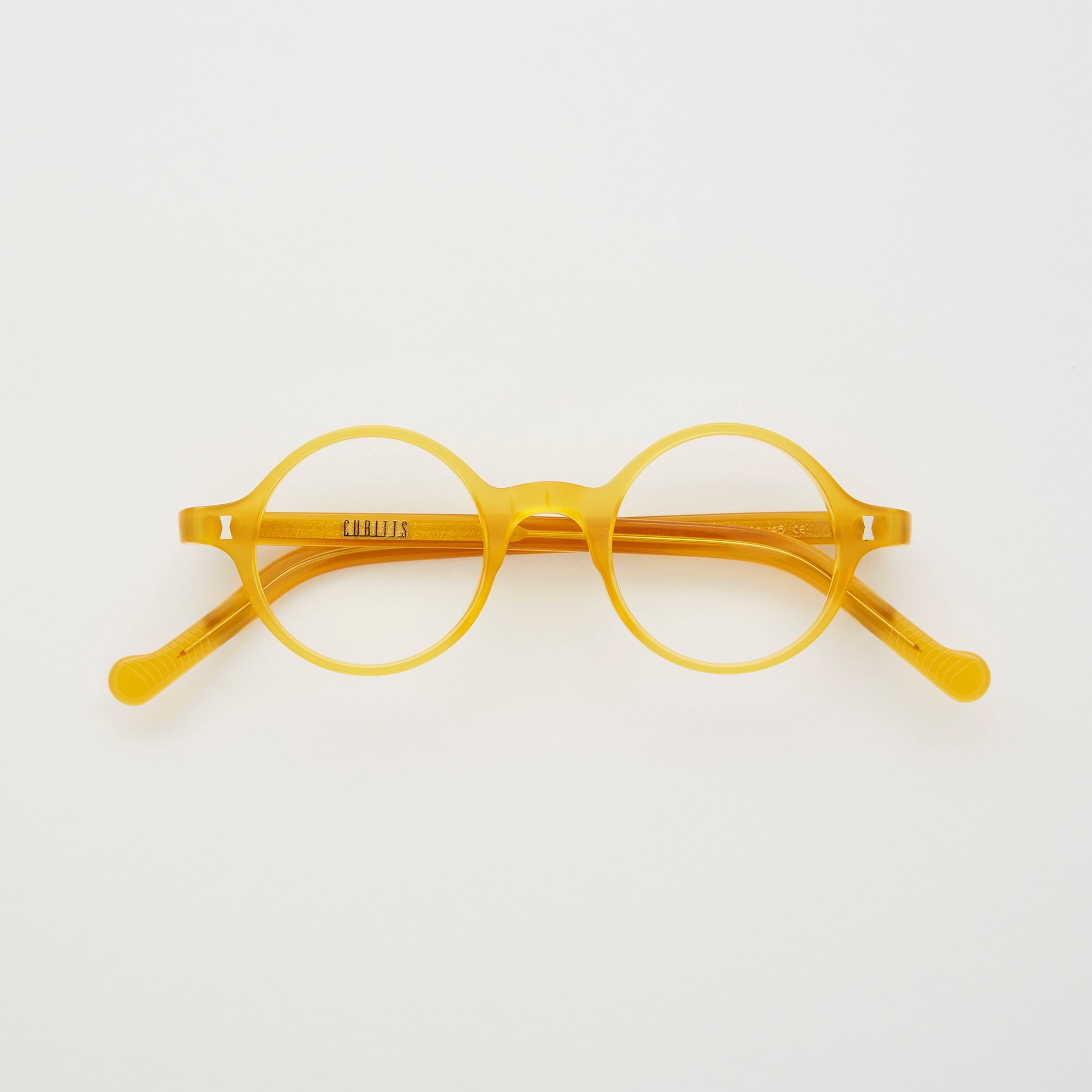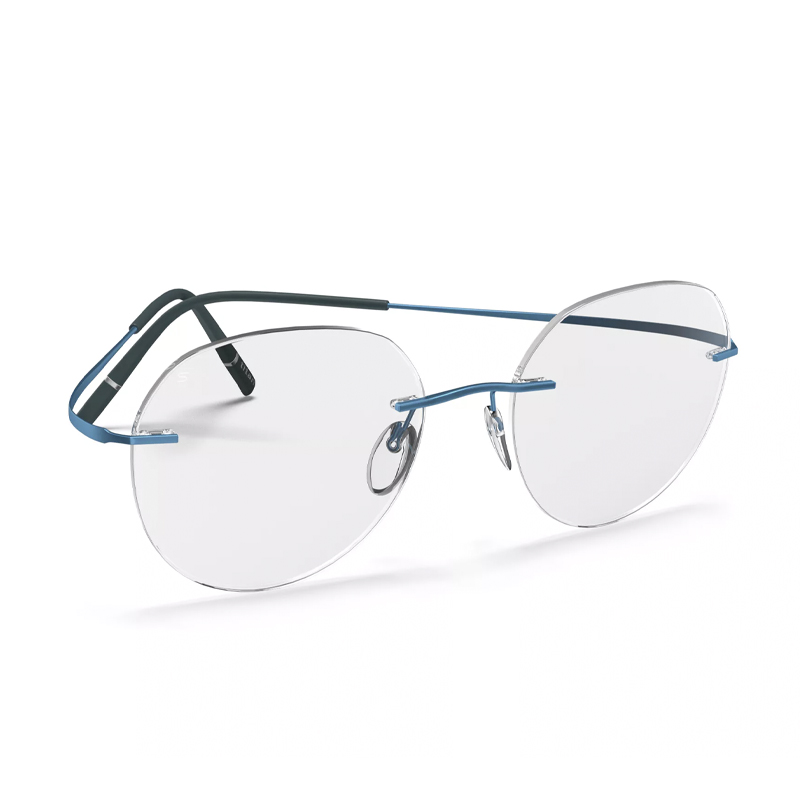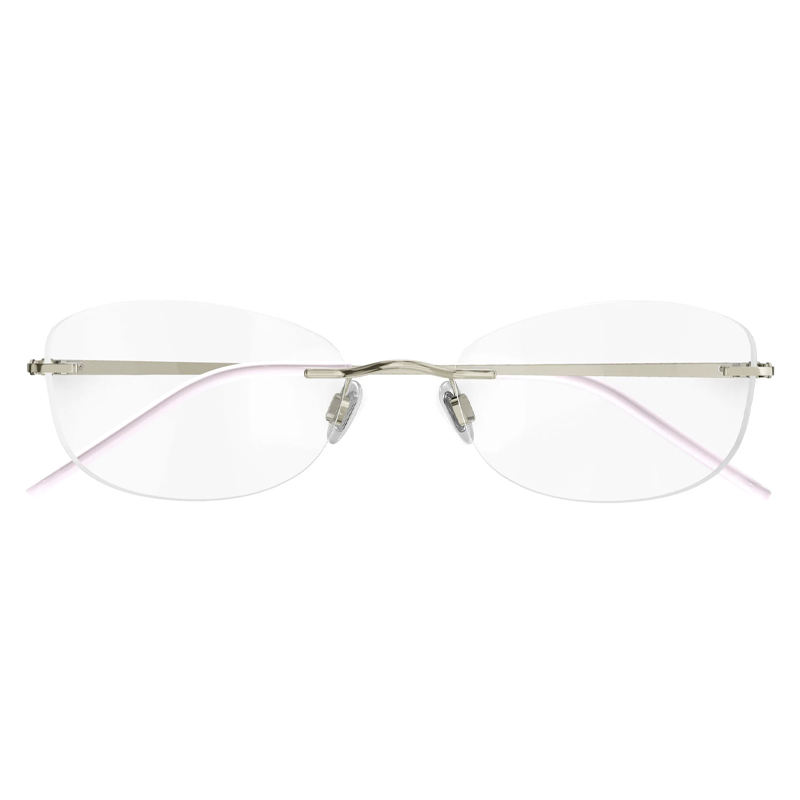Eyeglasses trends 2024: ideas to update your frames for maximum style points
Optical experts explain the latest eyeglasses trends to note for the coming months


Rivkie Baum
Embracing our guide to the key eyeglasses trends 2024 will up your frame game in the coming months. Select the right pair of glasses and they will transform your face, defining and enhancing features. And while the initial investment of a designer pair might be daunting, once you factor in the cost per wear, the price rapidly works out to pennies a day over time.
Before you part with your cash for the eyeglasses trends 2024, consider the shape of your face and what will work to complement it in the best way. Just like shopping the biggest sunglasses trends, when it comes to investing in your eyewear it’s important to consider several factors including your face shape, lifestyle and skin tone to find the most flattering frame.
The shape of your face is key as you want a pair that works with your features, rather than against them. While we don't often think of glasses in the same way we would other fashion trends, glasses, like with other areas of design get updated in line with current tastes, although you will find that they change less drastically than say the best designer handbags or shoes from season to season.
Remember to inject a little of your personality in your frame choice too, whether that's through colour or silhouette, as they will often be one of the first things people notice about you. While eyeglasses were once dismissed as a boring necessity, they've become a fashion accessory in their own right - why not add a pair or two to your capsule wardrobe?
Eyeglasses trends 2024
More formulaic in many ways than the spring/summer fashion trends 2024, there is much less wiggle room for experimentation here. Those with an oval-shaped face are fortunate as most of the latest eyeglasses trends 2024 and frame shapes will suit them – if this is you, look for a style that is slightly wider than the widest point of your face for the perfect pair.
Those with a rounder visage may find that they look best in a square or rectangular shaped frame as these balance the face, making it appear longer and adding angular detail. On the flip side, wide frames with a top bar or flat frame style will flatter a longer face by creating a shortening illusion. If your face falls somewhere between and is more of a square, try experimenting with geometric or circular frames, both of which are key eyeglasses trends 2024.
1. Colour gradient frames

Actresses Cate Blanchett and Debra Messing are both fans of the gradient frames eyeglasses trend 2024
If you’re looking for a coloured frame but want something softer, why not consider the eyeglasses trend 2024 for coloured gradient frames? The ombre effect is a gentler take on both colourful frames and darker frames, brightening the wearer’s face without overwhelming it. Carissa Dunphy, founder of OpticianNow.com says: “Gradient frames are evolving in a good way - in earlier eyewear fashion, gradients tended to only be monochromatic. Somewhat recently, manufacturers have been experimenting with colour combinations that you wouldn’t think to work, but are strikingly complimentary - such as brown to teal or white tortoise to cobalt blue, to name a few.”
Sign up to our free daily email for the latest royal and entertainment news, interesting opinion, expert advice on styling and beauty trends, and no-nonsense guides to the health and wellness questions you want answered.
A contemporary yet artistic approach to eyewear, look for styles that are darker at the brow and get lighter towards the bottom of the frame for a flattering look that draws attention to the upper portion of the face, highlighting the eyes and cheeks.
There are no set colours for the season, although you may want to reference the latest fashion colour trends 2024 in your choice for the most up to the minute styles, or alternatively investigate what colour suits me to get your most flattering shade.
Will the Colour Gradient Frame trend suit me?
The good news is that this an eyeglasses trend 2024 that can work for every face shape and skin tone and they offer a lighter look to traditional frames - the key is finding the perfect colourway for you.
Classic shades such as tortoiseshell are flattering on all skin tones, while those with cooler skin tones should look for warming hues such as raspberry or soft pink and those with warm or pink undertones to their skin colour can experiment with cooler colours such as blue or grey.
2. Transparent frames

Comedian Ali Wong and actress Cate Blanchett both opt for transparent frames with cool details.
One of the top styles for eyeglasses trends 2024, transparent frames are an elegant option for those who wish for a more subtle frame. The translucent nature means that they adapt to all skin tones and flatter all face shapes plus wearers can experiment with chunkier acetates for a cool bookish look - hello Dark Academia style. While totally clear frames are an ongoing popular option, subtle pastel tints such as peach, soft pink and sunshine yellow can brighten the face and balance skin tones.
Roland Keplinger, Director of Design at Silhouette International says: "In keeping with the minimalist style which has graced catwalks for the last few seasons, transparent frames, such as Silhouette’s Infinity View, pair well with neutrals and monochromes. The trend looks good on almost everyone, avoiding clashing with hair colours or skin tones, and cheekbones and eyes are highlighted, with little shadow created on the face. Widespread across eyewear styles, the transparent trend can be applied to any shape glasses, making it universal for all tastes, too."
Will the Transparent Frames trend suit me?
If you're looking to minimise the impact of eyeglasses on your face, then transparent frames are a subtle way to wear them. However, they are not totally invisible, so just as you may ponder what sunglasses suit me?, it's worth giving the same thought to your optical frames for a flattering look.
For the most subtle look, opt for totally clear frames or a soft pastel that matches your skin's natural undertones.
3. Oversized frames

Myleene Klass and Michelle Visage add a touch of geek chic to their looks with the oversized eyeglasses trend 2024
Inspired the 1970s style which was seen on the catwalks of several designers at Milan Fashion Week 2024, oversized frames continue to be a forerunner for the eyeglasses trends 2024. The supersized trend has a flattering shape for every face shape: large, round frames work on square and longer faces, while oversized square frames will sharpen round faces. If you’ve ever wondered how to dress like Carrie Bradshaw, take a tip from Sarah Jessica Parker and opt for aviator glasses, which work on every face shape but are particularly flattering on oval and heart shapes.
One thing to consider though is the impact of fashion vs function, as Dunphy points out: “While many people love the big, bold, fashionable frames, with that large style, also comes a heavier pair of glasses, thicker lenses and potential visual peripheral distortion. Talk with your optician about lens material options to reduce the lens thickness and weight, so you can rock that oversized frame!”
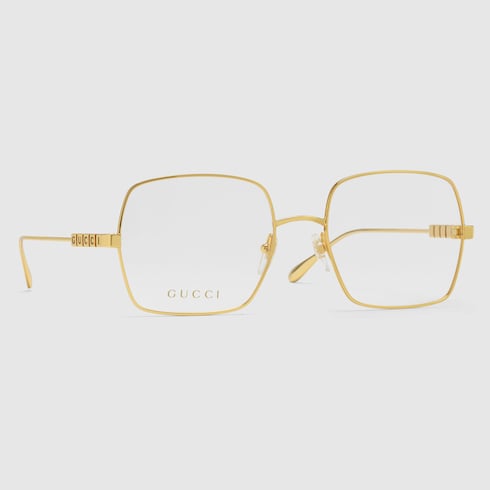
RRP: £375 | Italian clothing brand Gucci are the ultimate in oversized glasses - the mega proportions of this pair are off-set by the wire frame, helping to keep them lightweight.
Will the oversized eyeglasses frame trend suit me?
This may not be the best trend for you if you have a slim face as the oversized frame can be overbearing. It's also worth considering the weight of chunkier styles - not only will be frame be heavier than a more delicate pair of frames but the subsequent weight of lenses if you have a stronger prescription could lead to aches on the tops of your ears and bridge of your nose!
However, this trend has many different styles that fall under it, from cool chunky acetates to oversized wired aviators, so you're bound to find a style to suit not only your face but also your optical needs if you love this look!
4. Flat and top bar frames

Annette Bening and Sarah Jessica Parker opt for Aviator-style Top Bar eyeglasses
A fashion forward combination of retro aesthetics and modern chic, the flat top bar frame is a bold style statement that commands attention. A stronger sister to the ever-popular Aviator frame, for 2024 the shape gets a makeover in heavier acetate for a fresh take on this vintage-inspired look.
Roland Keplinger, Director of Design at Silhouette International says: “Following on from 2023, ‘80s style top bar frames are set to continue to be popular in 2024 in line with the wider aviator trend. For the full look, these can be teamed with earthy tones and utilitarian outfits, or worn to add a subtle nod to the trend. Metallic titanium frames similarly replicate the ‘80s look, whilst 2024 will offer bolder coloured aviator designs, such as Silhouette’s Illusion Lite, in on-trend colour palettes.”
As with many heavier frames, Dunphy has sage advice when it comes to finding the perfect fit: “Make sure the nose bridge fits well and doesn’t slide - also, keep the tips above about oversized frames in mind!”
It’s also important to consider the colour when picking your style. While black is a popular style choice, it can be domineering and drain colour from the wearer. Tortoiseshell, navy and crimson are excellent alternatives that will look cool without overpowering the wearer’s face.
Will flat and top bar frames suit me?
There are certain frame shapes that are universally flattering for every face shape - flat and top bar frames are a timeless style for a reason! As with many frame shapes, it's simply a case of finding the perfect pair for your face but you cannot go wrong with a classic aviator shape in a metal frame. If you're not sure what colour finish to pick, gold will add warmth to your face and the thinner style of frame is a subtler option for those who want a non-obtrusive look.
However, one thing to consider with this style is the addition of nose pads on many designs as the wire frame is too fine to sit in place on the bridge of the nose. If you're wearing them for a longer period of time, you may find that they create temporary grooves in your cheeks and can cause sweat to build up on warmer days.
5. Geometric frames

Meryl Streep and Prue Leith show that geometric frames are a stylish option for your new optical glasses
If you’re looking for a bold optical look, the eyeglasses trends 2024 for geometric frames might be just the ticket. Carissa Dunphy, founder of OpticianNow.com says: “Geometric frames, the most unique and eye-catching trend, have been taking over on the runway, magazines, and optical shops. More and more people are seeking a frame with sharp corners or asymmetry, combined with bold colors, that projects their individuality.”
A style statement, angular frames are surprisingly flattering as they work with many face shapes – the additional of angle details to a round or oval face will sharpen the shape, while rounder octagonal styles will soften strong jaws.
Bianca Swan, Style Editor at Specsavers adds: “Geometric shapes are set to be a key look for 2024. The trend is evolving now to not just be hexagonal but experimental with bold shapes, think more angles combined with softer lines in the same style of frame. The geometric shapes are also becoming more playful and fun; for example, while we’ve previously seen it mostly in metals, it is now also reinventing itself in acetate.”
If you’re looking for a geometric style for everyday wear, why not opt for a style update to this shape in a pale acetate? Just like their warm weather counterpart, this oversized frame will add the same finishing touch to your outfit as the best quiet luxury sunglasses.
Will geometric frame eyeglasses suit me?
Geometric eyeglass frames are not for the faint of heart, so if you're more of a wallflower when it comes to opticals, this might be one trend to avoid as this style draws attention to itself.
If you're feeling bold, geometric frames are complimentary to most face shapes as the angular designs complement rounder features, creating the illusion of sharpening soft lines. For a subtle take on this trend, try a wire frame style to start with before building up to more statement options such as the colourful acetate styles worn by celebrities including Oprah Winfrey and Prue Leith.
6. Cat eye frames

Whether you go for jewelled like Meryl Streep or classic cats eye frames like singer Lisa Loeb, this timeless eyeglasse frame is a keeper!
Based on retro styles originally popular in the 1950s, the cat eye has become a modern-day classic when it comes to eyewear. Suiting all face shapes, the upturned corners add a feminine touch to the wearer’s face, although the trend for heavier frames is also creeping into the cat eyes, as Bianca Swan, Style Editor at Specsavers explains: “The vintage inspiration is prominent here as the cat eye frame continues to evolve each season. For 2024 we see it in both chunkier acetate styles and finer metals. The angular and pointed silhouettes add newness and an elegant edge to the traditional style while expressing a confident and bold femininity”
Styles with exaggerated upturns or a touch of sparkle in the corners will add further interest to this look. With their girlish shape, cat eye glasses are the perfect eyewear to complement your best jumpsuits.
Will Cat Eye eyeglasses suit me?
The good news is that cat eye frames are one of the most flattering frame shapes of them all. This vintage-inspired frame features feminine uptick corners that sit at the widest point of the face, creating a slimming effect on the wearer.
7. Round frames

Oprah Winfrey and Kelly Hoppen go for quirky round eyeglasses frames to complement their faces
Another vintage-inspired frame, quirky round frames are once again an eyeglasses trends 2024. The circular shape is most flattering on those who have longer oblong faces but also work if your faces has angular or prominent facial features.
Rather than previously popular dark frames, the new season brings a fresh colour perspective, as Roland Keplinger says: “‘60s and ‘70s style icons regularly sported round frames which have returned to the forefront of fashion, in keeping with retro trends that featured on SS24 runways.
Round or oval frames add softness to squarer faces, with narrow styles complementing strong, angular features. Soft summer colours such as sky blue and pastel lilac, found within SS24’s colour palette, help to elongate the face and are particularly flattering.”
Will round frame eyeglasses suit me?
If you have a square face or more angular features, round frame eyeglasses are a great way to add soft curves to your facial appearance. With this style, it's important to make sure that the frames are the right size for your face - if they're too small, they'll make your face appear wider, while oversized round frames can look owl-like. Look for styles where the circular part of the frame finishes in line or just within with the edge of your face for the perfect fit.
8. Frameless glasses
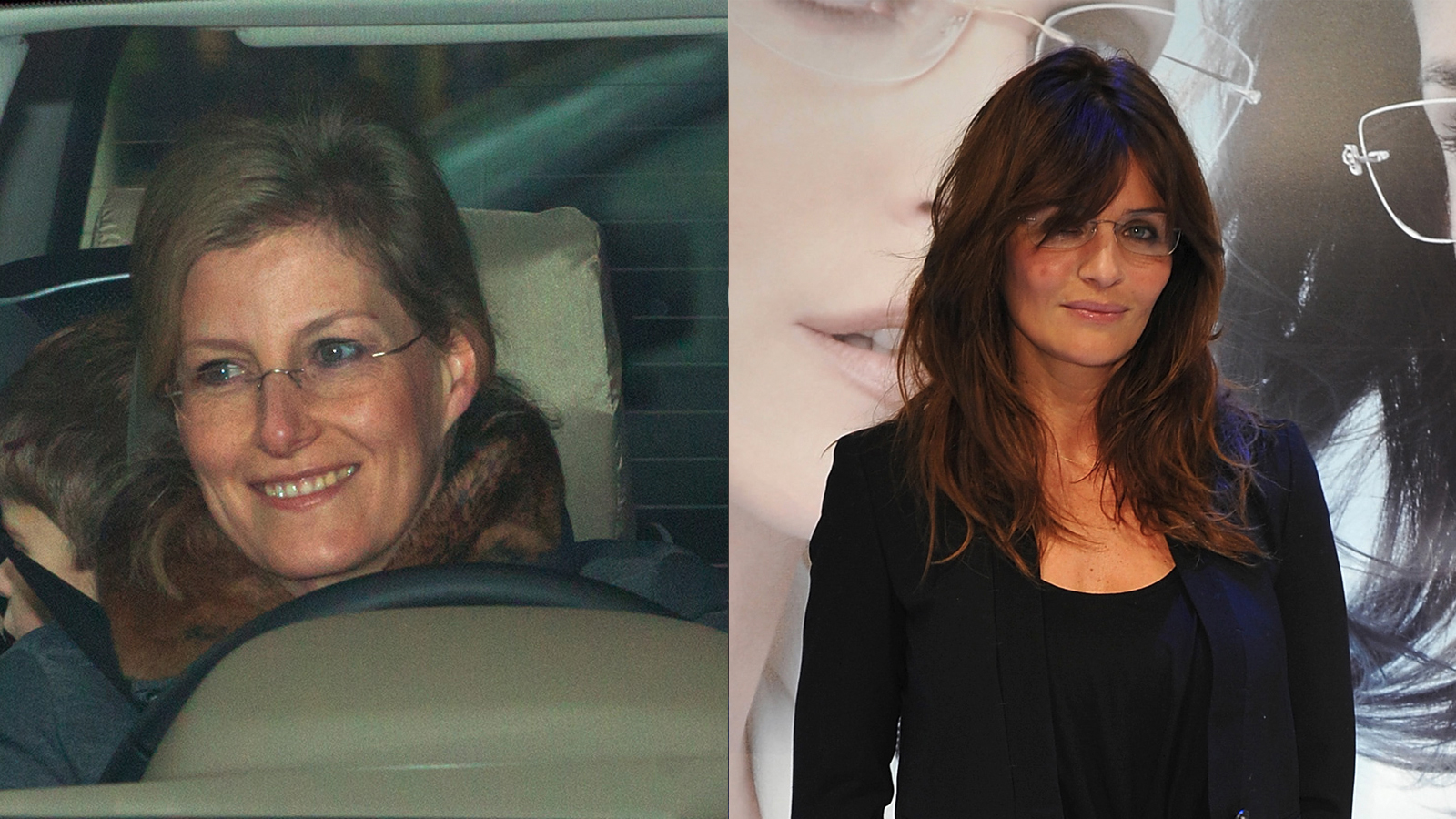
From actual royalty to catwalk queens: Duchess Sophie and Helena Christensen love frameless eyeglasses
Once a stalwart of the professional and corporate worlds and having been a popular choice during the Nineties, frameless glasses have slowly gathered traction in the fashion world for their lightweight nature and are having a resurgence as one of the eyeglasses trends 2024. As well as being a featherweight option, the active lack of a frame obscuring facial features means the style is a great choice for those who may not want to wear visible glasses and want a minimalist style.
Roland Keplinger says: "Rimless frames have evolved from classic styles to trend-driven accessories, with varying shapes, sizes and styles and the ability to create bespoke frames by adapting the likes of nose bridges and temple tips. Frameless glasses can now be adapted to create coloured styles which fuse rimless and full-rim frames, such as Silhouette’s Colour Groove range – a line of rimless glasses which has been delicately painted around the lenses’ edge in SS24’s palette to make trend-driven styles with personality".
The return of the trend is confirmed by Simon Jablon, Creative Director of Linda Farrow who says: "Inspired by the 90’s music video trend, it was only natural to move that trend over to optical. We have a great frame called the Taylor that fits this trend perfectly – the glossy rectangle lens is clasped place with and intricate temple setting which folds neatly along the outer edge".
However, those with a larger face may find that the frameless style is not as flattering as the smaller frame shape can amplify the widest point of the face.
What to consider when buying new eyeglasses
When investing in a new pair of eyeglasses, it may be tempting to go for the most trendy styles, but it's worth thinking about your face shape and what colour will suit you best as well as practical elements such as the thickness of the frame and weight of the lenses that will be encased.
FACE SHAPE: While there are no hard and fast rules, but choosing a style that flatters your face will help boost your confidence and enhance your features. Some shapes such as the cat eye and aviator are universally flattering and will work on every face shape.
However, if you have a round face, choosing a rectangular or square shaped eyeglasses frame can help add definition to your facial features by adding an angular contrast to softer features and drawing the eyes down, creating a longer look.
If you have a narrow face, rectangular eyeglass frames or top bar styles can help to create the illusion of shortening your face.
Those with a square face or strong features might find round and geometric styles of frames to be the most flattering as they will soften angular elements of your face.
COLOUR: The colour of your eyeglasses frames is a key thing to consider as picking the right shade for you will enhance your face. If you're going for a finer metal frame style, gold tones are flattering for every skin tone as they will add warmth to your skin. Silver tones have more of a cooling effect, so are flattering on those with warmer pink and olive skin tones.
If you like the look of chunky acetate geek chic glasses, try swapping black frames which can wash you out in winter for subtle colours. Maroon and deep green are two colours that work on every skin tone, while shades of pink and red are not only fun but flattering as they will add a warming touch to your skin tone.
Gradient colour frames are a great way to experiment more subtly with colour - look for styles that blend to tortoiseshell or taper to a clear style for a cool and flattering feature to enhance your facial features.
PRACTICAL ELEMENTS: While a flattering style is front and centre when it comes to things to consider when buying new eyeglasses, it's also important to think about practical aspects too. If your prescription is stronger and you have thicker lenses, frameless or oversized styles may not be practical as the frame might not be able to support the additional weight of the lenses. You might find that a slightly thicker acetate frame offers more support, or opt for a style with a smaller shape in order to minimise the weight of your glasses. Many acetate frame do not rely on nose pads, sitting directly on the bridge of the nose too which you might find more comfortable if wearing eyeglasses for longer periods of time.
FAQs
Will frameless eyeglasses suit me?
Frameless eyeglasses are perhaps the most subtle of all of the trends on our list. With minimalist detailing and a ghost-like floating style, these are the perfect frame for those who really don't like wearing glasses.
However, like flat and top bar frame styles, this style relies on nose pads which you might not find comfortable, so it's worth considering this before committing to this style.
Another factor to consider is the thickness of your lenses - the fine wire of the arms and nose bridge can only support a finite weight so this style may not be the one for you if you have a stronger prescription!
What eyeglasses frames never go out of style?
If you want to make sure your new eyeglasses don't date, opt for a timeless pair such as cat eye, aviator or rectangular. These classic shapes are not only flattering for virtually every face shape but they are also frames that never go out of style!
What colour eyeglasses are the most flattering?
Each skin tone has different hues that will be most flattering but as a general rule gold and tortoiseshell eyeglass frames are foolproof when it comes to finding a colour to suit you.
What style of eyeglasses is most comfortable?
If you're wearing your eyeglasses for long periods of time, comfort is an important factor and it's worth trying on several different shapes to see how they fit your face. The frame should fit snugly along the side of your face to avoid slipping off your face - you can ask your optician to tighten the screws or gently heat the arms to bend them slightly in order to fit better.
Your eyeglasses should also not rest on your cheeks. If they do, the frames may be sitting too low on the bridge of your nose or be too heavy. Look for styles with a narrower gap between the lenses to sit higher up, or a pair with nose pads which will rest on the side of your nose instead.
Our experts...

Carissa Dunphy is a board-certified optician with more than 15 years of experience working in the eyecare industry, now a Marketing Specialist at Professional Eye Care Associates of America (PECAA). Carissa is also an expert contributor to various industry publications, co-hosts the OWA Talks Podcast, and is the recipient of awards including Most Influential Women in Optical and Eyecare Business Game-Changer.

Simon Jablon is the Creative Director of sunglasses andopticals brand Linda Farrow. Upon uncovering a collection of original designs at the family warehouse in 2003, Simon successfully resurrected the styles and the brand itself, which is now stocked in 20 countries and has 18 stores across the globe, from Mayfair to Miami and Hong Kong.

Bianca Swan began her career interning at magazinesincluding Dazed & Confused and Marie Claire where she found her passing for styling, which led to assisting several high profile fashion stylists and working alongside the acclaimed photographer Rankin. Her career has given Bianca theopportunity to work in several fashion capitals for brands including Burberry, Lacoste and Marks & Spencer. Bianca’s current role is Style Editor at Specsavers, in which she is responsible for overseeing optical trends and product launches, ensuring that consumers are able to find a style that is just right for them.

Roland Keplinger is the Director of Design at Silhouette International and has been responsible for design across its three brands since 2012. Roland helps to develop innovative and cutting-edge eyewear.Prior to this, he worked as a designer at a Nuremberg-based agency for many years where he focused primarily on product design, working on a wide range of products ranging from tiny hearing aids to high-end headphones to precision optical instruments, all for well-known global brands.
Antonia Kraskowski is a freelance fashion editor with over 15 years of experience in the industry.
Having started her career at Conde Nast working for titles including Easy Living, Glamour and Vogue New Markets, Antonia went on to work in the fast-paced world of newspapers and weekly magazines, becoming Fashion Editor at Express Newspapers and Magazines in 2014, a role she held for five years before going freelance.
Her career has seen Antonia travel the world, shooting in 18 countries and styling campaigns for brands ranging from Ben Sherman and DKNY to Wallis.
- Rivkie BaumFashion channel editor
